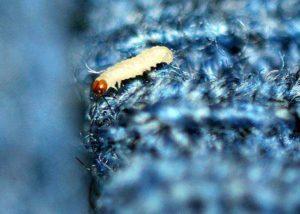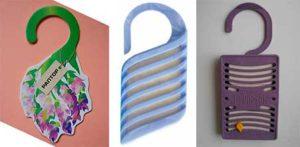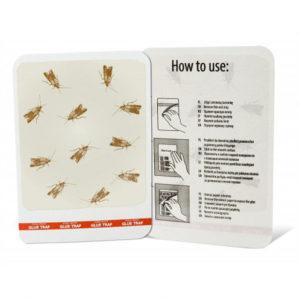Clothing moth: what does a pest that spoils clothes look like
Taking things out of the closet, you want to be sure that they are intact and flawless. However, clothes moth can make its own adjustments. There are many ways to deal with these insects, but for this you need to know the enemy in person. Why does it appear in the house, how to distinguish clothes moth from food and a lot of other useful information, will be discussed in this article.
Content
What does a clothing moth look like (photo)
The main characteristic of the pest
Name: Moth clothes or room
Latin: tineola bisselliellaClass: Insects - insecta.
Squad: Lepidoptera - Lepidoptera.
Family: The real moths are Tineidae.
 | Habitats: | cabinets, furniture |
 | Dangerous for: | fabrics, furs, upholstery |
 | Means of destruction: | folk methods, chemicals, traps. |
Many mistakenly believe that if order and cleanliness are observed in their house, then these pests are not afraid of them. But in vain, because the moth does not start from dirt.
She loves things made from natural fabrics such as wool and fur. She does not disdain unattended cereals or other loose ingredients in the kitchen.
Such components are in every home, so you need to always be on the alert. In addition, if there is a moth in a neighboring apartment, then it is possible that it can enter the dwelling through open doorways, vents, and cracks.
You can bring it with purchases from the store, with things or furniture that were used by other people.
What it looks like and where it lays eggs
The clothes moth looks like a rather large butterfly. Its wingspan reaches 23 millimeters. The color of the wings is predominantly sandy, with a purple tint at the base.
She lays her eggs in dark hard-to-reach places, in the folds of fabrics, under the collar and cuffs, in pockets, in the recesses of textile seams.
Life cycle
The full development cycle from egg to butterfly takes from one to two and a half years. After hatching from the chrysalis, the butterfly immediately seeks a sexual partner and mates. She lays about 50 eggs in two weeks. After laying eggs, which takes seven days, the female lives for a few more days and dies. The male continues to mate for the rest of his life.
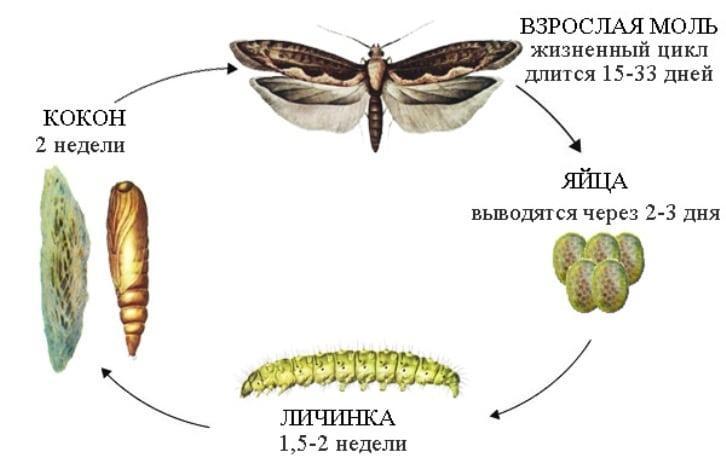
Moth life cycle.
Damage
Adult larvae crawl on clothes and furniture. The most dangerous are only the larvae hatched from the eggs. They destroy, gnaw everything in their path, even synthetics and plastic bags.
After the toothy larva has reached the thing, it remains only to throw it away. Such things, as a rule, are not subject to restoration.
What feeds on
The clothing moth usually lives in cabinets, furniture, in the attic, in the pantry, wherever there are upholstered furnishings and clothing. Their favorite food is fur coats, woolen clothes, linen, cotton, natural angora, silk, cashmere.
Clothes moth larvae
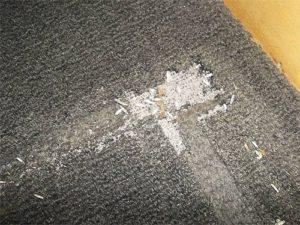
Moth larvae.
The eggs of room moths are white in the shape of an oval, the size of the eggs is so small that they cannot be seen without a magnifying glass. On the sixth day, larvae up to 1 centimeter long hatch from the eggs. The body of the larva is white, shiny, with a head of a darker color.
Signs of infection
Gnawed clothing is perhaps the most obvious sign of a moth. Even if there are no such obvious signs, it is not difficult to detect the presence of larvae. These criminals leave too many traces.
They give out their discarded skins, paths on tissues and the remains of waste products.
How to get rid of clothes moth
It is quite difficult to remove the clothes moth. Especially considering the fact that caterpillars can go without food for a month. There are folk, chemical and professional means of insect control.
httpv://www.youtube.com/watch?v=GUdKDN—5BM
Regular monitoring
In order to minimize the risk of invasion, regular inspection is carried out in cabinets, on shelves. Both butterflies and larvae cannot exist without giving themselves away. In their habitats, there will certainly be damaged areas of tissue, gnawed pieces of fur, cobweb threads, cocoons and feces.
Suspecting the presence of unwanted guests, you should respond immediately, otherwise trouble cannot be avoided.
Preventing or reducing infections
Cleaning in a residential area infected with clothes moth larvae should be carried out with special care.
- It is necessary to pay attention to hard-to-reach places: behind radiators and ventilation holes, under skirting boards and wardrobes.
- Wipe shelves and furniture with a special disinfectant.
- When using a vacuum cleaner, immediately dispose of the contents of the dust bag at the end of work, so that the larvae and eggs that have fallen there cannot return again.
If the moth is found in the closet, all things should be removed from there and all surfaces should be washed.
Protecting things in the closet
Clothes and other things lying in the closet without proper care are most susceptible to insect attacks.
Therefore, they must be stored in a clean, dry form, in sealed packages, pre-treated with natural repellents, such as mint, lavender, wormwood, or use special chemicals, dichlorvos.
Freezing and heating
Moth butterflies die with a sharp temperature drop, and it doesn’t matter which way this drop is. It can be temperatures above 50 or below 20 degrees Celsius.
The product, previously placed in plastic packaging, is either fried in an oven or frozen in a freezer. It all depends on the type of fabric: if she is not afraid of such types of processing, then you can safely take them into service.
The contents of the closet are reviewed for damage, the surviving clothes are washed and roasted at high temperatures. Bright sunlight is not the best friend of the moth, it dies in the light.
Washing is carried out at a temperature of at least 50 degrees and a duration of at least half an hour. Textiles that cannot be washed at high temperatures should be dry-cleaned.
Traps
Another way to fight are glue pheromone traps. This is the simplest, most accessible and relatively cheap method. The principle of its work is very simple.
The female goes to the smell exuding from the trap, and sticks her paws to the glue, gets stuck there and dies. You can buy it at any specialized institution.
preventive measures
As a preventive measure, folk remedies are often used.
Repellent plants are capable of repelling insects and moths with their specific aroma.
The effect of them is longer than that of chemicals, but they are the least dangerous for the health of people and pets. These include tobacco, garlic, vinegar, geranium, lily, mint, lavender, rosemary, citrus peel, and many others.
By this link You can learn more about all the ways to get rid of moths.
Conclusion
Almost always, people themselves are to blame for the appearance of moths in the apartment and the harm caused by it. But you should not despair. Having full information about the enemy and armed with the necessary means, any person is able to resist him and win. And observing all precautions, it has every chance not to face him at all.
Previous